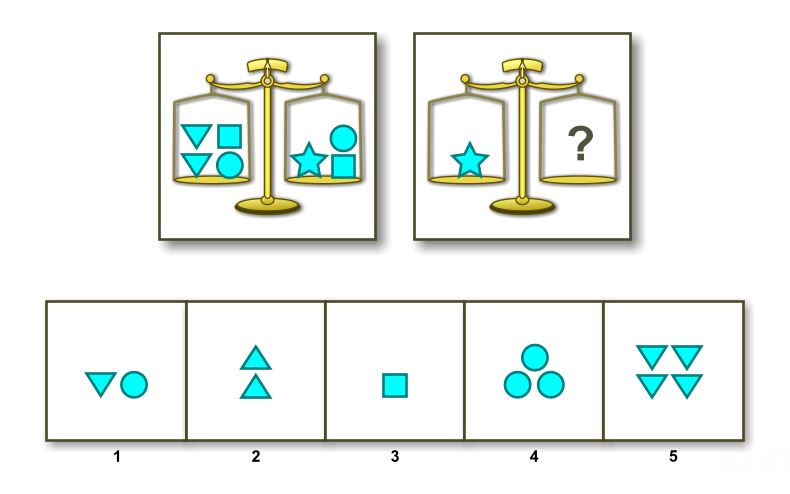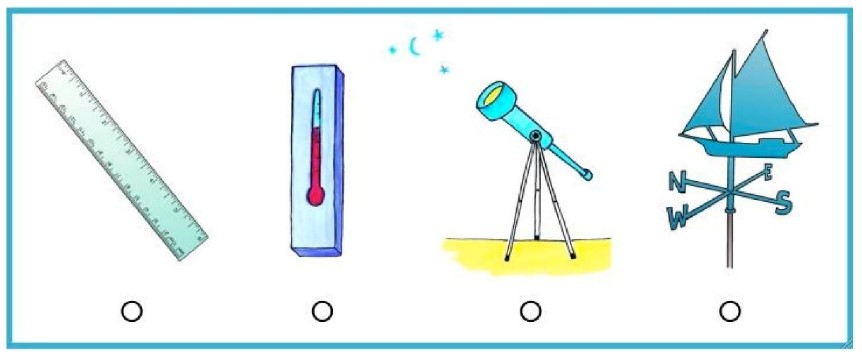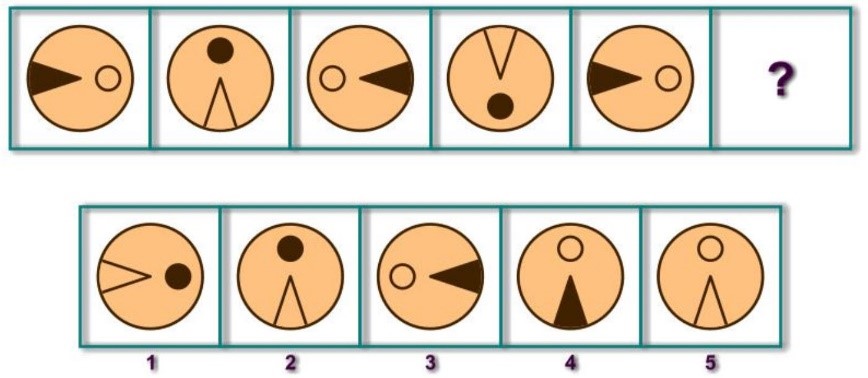WISC Sample Test Questions for WISC-IV and WISC-V
Wondering what kinds of questions your child will be asked on the WISC-V (Wechsler Intelligence Scale for Children, Fifth Edition)? Here are five examples from five of the subtests given on the WISC-V.
IMPORTANT: While the WISC-V sample questions shown in red (answers are bottom of page) on this page are representative of what your child will see on the exam, they aren’t taken directly from the actual test that’s being administered this year. For more WISC Practice, check out our 100 Free Questions.
WISC-V Sample Question #1 — Fluid Reasoning, Figure Weights:
Fluid Reasoning is one of the five primary index scores measured by the Wechsler Intelligence Scale for Children, Fifth Edition (WISC-V). It assesses the ability to detect the underlying conceptual relationship among visual objects and use reasoning to identify and apply rules. Identification and application of logical and conceptual rules are central to fluid reasoning.
The Fluid Reasoning Index comprises two subtests:
Matrix Reasoning: This subtest measures visual information processing and abstract reasoning skills. It requires children to look at an incomplete matrix and select the missing piece from five options.
Figure Weights: The test-taker is presented with a balance scale with geometric shapes on it. Some of the shapes are assigned specific weights. The child’s task is to select the shape that would maintain the balance of the scale.
These tasks require the child to identify patterns, make deductions, and apply these to new and different contexts. Fluid reasoning is key to problem-solving, understanding and learning new information or skills, and adapting to new situations.
Figure Weights Subtest: The Figure Weights subtest is part of the Fluid Reasoning Index and evaluates quantitative and analogical reasoning. It provides a measure of the ability to maintain the balance of a scale by determining the missing weight.
In this subtest, the child is presented with a virtual balance scale that is missing a weight on one side. The child must select the correct option from multiple choices that would maintain the balance of the scale. The items increase in difficulty, progressing from simple matching to more complex analogical reasoning problems. This task requires the child to understand the concept of equality and inequality, identify patterns and relationships between shapes, and apply problem-solving skills to select the correct weight. Together, these subtests provide a comprehensive assessment of a child’s fluid reasoning skills, which are crucial for learning, problem-solving, and adapting to new situations. They also help identify potential learning difficulties or cognitive impairments that might require further investigation or intervention.
Parent, say to your child: “Which one of these (point to the answer choices) weighs the same as this (point to the star on the left side of the question mark)?”

WISC-V Sample Question #2 — Verbal Comprehension, Vocabulary:
The Verbal Comprehension Index (VCI) is one of the five primary index scores measured by the Wechsler Intelligence Scale for Children, Fifth Edition (WISC-V). It assesses a child’s verbal concept formation, verbal reasoning, and knowledge acquired from the environment.
The VCI is composed of several subtests:
Vocabulary: In this subtest, children are asked to define a given word. This measures word knowledge and verbal concept formation. It’s an important indicator of overall intelligence, as vocabulary development reflects the degree of language acquisition and usage.
Comprehension (optional): This subtest measures a child’s ability to understand and answer questions about social situations or common concepts. Like the Information subtest, it’s not required to calculate the VCI but can provide additional insights.
Vocabulary Subtest
The Vocabulary subtest is an integral part of the VCI and is designed to measure a child’s vocabulary knowledge and verbal concept formation. It provides a measure of word knowledge, verbal productivity, and concept formation.
In this subtest, the child is asked to define a series of words that increase in difficulty. The words range from common items (like “bed” or “run”) to more difficult and abstract terms (like “persistence” or “commerce”). It’s a task that requires not just rote memory, but also the ability to formulate a clear definition, which requires understanding the meaning, usage, and context of words.
Together, these subtests provide a comprehensive assessment of a child’s verbal comprehension abilities. They offer insight into a child’s verbal cognitive abilities, verbal reasoning skills, breadth of knowledge, and comprehension of the environment, which are all crucial for successful communication and learning.
Parent, say to your child: “I’m going to show you some pictures. First I’ll tell you a word, and then I want you to point to the picture of that word. Let’s begin! Now, point to the weather vane.”

WISC-V Sample Question #3 — Verbal Comprehension, Similarities:
Similarities: This subtest measures verbal concept formation and reasoning. Children are asked to describe how two words are alike or similar. This requires abstract verbal reasoning, auditory comprehension, and expressive language skills.
The Similarities subtest is a crucial component of the VCI. It assesses a child’s ability to engage in abstract thinking and reasoning. In this subtest, children are given two words that represent common objects or concepts, and they are asked to describe how the two are alike. For example, a child might be asked, “In what way are a cat and a dog alike?” A child must then generate a response that captures the commonalities between these two items, such as “They are both pets” or “They are both mammals.” Responses are scored based on the quality of the conceptual relationship expressed by the child, with higher points awarded for responses that demonstrate a deeper understanding of the shared characteristics or abstract similarities between the two words.
The Similarities subtest, along with the other subtests in the VCI, provides valuable information about a child’s verbal comprehension abilities, including their vocabulary, their understanding of the world around them, and their ability to think and reason using language.
Parent, ask your child this question out loud: “How are morning and afternoon alike?” (Answer: They’re both times in a day.)
WISC-V Sample Question #4 — Fluid Reasoning, Matrix Reasoning/ Serial Order Matrices:
The Fluid Reasoning Index (FRI) is one of the five primary index scores assessed by the Wechsler Intelligence Scale for Children, Fifth Edition (WISC-V). The FRI measures a child’s ability to recognize patterns, solve novel problems, and use logic in new situations without relying on explicit verbal instruction or knowledge.
The Fluid Reasoning Index comprises several subtests:
Matrix Reasoning: This subtest is designed to measure fluid intelligence, the ability to think logically and solve problems in novel situations, independent of acquired knowledge. In this subtest, children are presented with an incomplete matrix and must select the missing piece from five options. This task requires visual information processing, abstract reasoning skills, and the ability to perceive the relationships among the various elements and identify the underlying rules.
Figure Weights (optional): This subtest requires the child to select the shape that would maintain the balance of a scale. This task involves quantitative reasoning, the ability to problem-solve, and an understanding of part-to-whole relationships.
Serial Order Matrices (optional): This new optional subtest asks the child to identify the pattern or sequence in a series of matrices and choose the correct matrix to complete the series. It measures the ability to understand sequences, detect patterns, and make predictions.
Parent, say this to your child: “Do you see the figures inside these boxes? They form a pattern. Choose the figure in the answer row below that continues the pattern.”

WISC-V Sample Question #5 — Working Memory, Digit Span:
The Working Memory Index (WMI) is one of the five primary index scores measured by the Wechsler Intelligence Scale for Children, Fifth Edition (WISC-V). Working memory involves holding information in mind and mentally working with it. It’s a cognitive function that plays a key role in concentration, learning, and problem-solving.
The WMI comprises the following subtests:
Digit Span: This subtest assesses working memory, attention, and concentration. It is divided into three sections: Digit Span Forward, Digit Span Backward, and Digit Span Sequencing. In Digit Span Forward, the child must repeat numbers in the same order as presented by the examiner. In Digit Span Backward, the child must repeat the numbers in the reverse order. Digit Span Sequencing requires the child to reorder numbers given to them into ascending order.
Picture Span: In this subtest, the child is shown a series of pictures and must remember and sequence them. This task requires visual memory and sequential processing.
Letter-Number Sequencing (optional): This subtest requires the child to listen to a mixed series of numbers and letters and then recall the numbers in ascending order and the letters in alphabetical order.
Digit Span Subtest: The Digit Span Subtest is an important component of the WMI. It is designed to measure the child’s attention, concentration, and working memory capabilities. In the Digit Span Forward task, the child must repeat a series of numbers in the same order as presented by the examiner. In the Digit Span Backward task, the numbers must be repeated in the reverse order. Lastly, in the Digit Span Sequencing task, the child is asked to repeat the numbers in ascending order. The difficulty level increases as the series of numbers gets longer.
These tasks involve not only the storage component of working memory (holding the numbers in mind) but also the processing component (manipulating the numbers by reordering them). It’s an essential measure of working memory capacity, which is important for various cognitive tasks, including problem-solving, mental arithmetic, and following instructions.
Parent, say to your child: “Let’s play a game. I’m going to say some numbers. When I am finished, I want you to repeat them exactly as I said them.” Then, recite the numbers below very clearly with exactly one number per second:
9 – 4 – 2 – 7 – 8 – 0 – 3
Be sure to change your voice register at the end of the series so your child knows it is over and time to repeat the number sequence back to you.
Answers: 2, 4th from left, They are both times in a day, 2, 9-4-2-7-8-0-3
Looking for more WISC Practice? Check out our 100 Free Questions!
See if TestingMom.com supports your child’s test by your school district. If you don't see your child's school district listed, check with us! We have practice for other tests as well.



Tell us about your experiences
43 Responses
Marie
My Doon will be tested for perceptual learning disabilities…. wanted to see what the questions were like . Thank you
madhulikalala@gmail.com
This is real fun. Can’t wait to give the test
tracy
Very helpful info, thank you for posting this
Laura
Thank you. We were trying to decide if we should have our bright child who exhibits test anxiety take this test. This made it easy to show her they were just puzzles. Thank you!
earguc@gmail.com
Best test we have taken ever. Cant tell how much it helped us.
Karen
Where are the answers?
TestingMom.com
Hi Karen,
The answers are at the very bottom of the post.
Best,
Connor
roshnimemon1@gmail.com
awesome
zhangyjiangj@hotmail.com
This looks fun.
Cindy
My daughter need to go to the exam. want to know how it looks like . Thank
Andrea
What age group would have the questions above? These seem to be for younger children. Surely they are too simple for a 10-12 year old and certainly a 13-16 year old? Can you please give examples of questions that a 10-12 year old might encounter?
mfakious@yahoo.com
I love testing mom
elbertmcgowan@gmail.com
Helpful
Mary
If a child has never experienced these type of tests, i.e. and sees a test paper for the first time is it possible that s/he might be taken aback and simply select random answers
TestingMom.com
Hi Mary –
Thank you for your comment.
This is a very real possibility and why our materials are developed to familiarize children with the concepts on these tests.
All the best,
Marcus
Hyde hurfu
It is interesting
Peggy
What age are these questions for. I notice some one else asked you that and you did not answer them.
If I order these can I get a set for preschoolers
TestingMom.com
Hi Peggy,
The WISC test is an IQ test given to children ages 6.5 and older. For children ages 3-6.5, you would want to use a test called the Wechsler Preschool and Primary Scale of Intelligence or WPPSI. Located at the top of our Buy Now page, you can unlock the Free 100 Questions and use them as a sample of what we offer. You will have the option to select a grade range, for you child I would suggest the Prek-K option.
Sincerely,
Ryan
Peggy
What age are these questions for. I notice some one else asked you that and you did not answer them.
If I order these can I get a set for preschoolers
Can I order 100 questions that are for preschoolers?
TestingMom.com
Hi Peggy,
The WISC test is an IQ test given to children ages 6.5 and older. For children ages 3-6.5, you would want to use a test called the Wechsler Preschool and Primary Scale of Intelligence or WPPSI. Located at the top of our Buy Now page, you can unlock the Free 100 Questions and use them as a sample of what we offer. You will have the option to select a grade range, for you child I would suggest the Prek-K option.
Sincerely,
Ryan
sdanze2013@gmail.com
Where is the answer for #1
Mary
These questions for a 6 year old???
helenyujie@hotmail.com
I like this test
jennifer.lynn.braun1@gmail.com
really FUN
Tori Mara
Find interesting. Thank you.
Elizabeth Smith
Please send the 100 questions. I am a grandmother and a retired educator.
TestingMom.com
Hi Elizabeth,
Our 100 Free Questions are a great sampling from many of the tests we support. Here are step-by-step instructions on how to access the 100 Free Practice Questions (No purchase necessary):
1.) Go to www.testingmom.com and log in using your email address and password.
2.) Once you are logged in, click the “100 FREE QUESTIONS” button on the left-hand side of the page Or, you can follow this link: 100 Free Questions.
3.) Once redirected, you will see a large, blue box that reads “FREE QUESTIONS.” Click the orange button that reads “UNLOCK NOW.”
We look forward to having you on board with us!
Thank you,
Ryan
ddmm1022@gmail.com
I have already registered testing mom. But there is no Wisc-v
TestingMom.com
Hi Chun –
We do have a section specifically for the WISC-V. Please email us at help@testingmom.com if you need assistance finding this section.
All the best,
Marcus
Fatema
Where are the answers?
TestingMom.com
Hi Fatema –
The answers are located at the bottom of the page directly above the ‘Become a Member Today’ button.
All the best,
Marcus
rhinoramanan@gmail.com
why i did not get a mail of free 10 tests ?
blessings
dr ram
TestingMom.com
Hi Dr. Ram,
Our 100 Free Questions are a great sampling from many of the tests we support. Here are step-by-step instructions on how to access the 100 Free Practice Questions (No purchase necessary):
Go to www.testingmom.com and log in using your email address and password.
Once you are logged in, click the “100 FREE QUESTIONS” button on the left-hand side of the page Or, you can follow this link: 100 Free Questions.
Once redirected, you will see a large, blue box that reads “FREE QUESTIONS.” Click the orange button that reads “UNLOCK NOW.”
We look forward to having you onboard with us!
Best regards,
Marcus
Van
I would like to look at the questions of a WISC exam. Please send me some. Thanks.
lizavanhuffel@gmail.com
Hi . looking to find out if the “FAST TRACK – LIFE TIME MEMBERSHIP” at $299 is a single payment only , or if its linked to a yearly subscription as well .
Wendy
It’s fun. Thanks Testing Mom.
lu.sun00@gmail.com
Hi,
I was in the middle of looking at the 100 free questions, but the screen suddenly refreshed and I can’t get back to the sample questions anymore. Please help. I’m just on question #5.
Rudy
What more information do you want?
shikhanand1988@gmail.com
Looking for more WISC Practice? Check out our 100 Free Questions! – Please advise where I can find these.
TestingMom.com
Hello,
Please reach out to our Parent Success Team at help@testingmom.com or by calling (877) 609-6203. They will be more than happy to assist you with this situation.
tauhida.alam79@gmail.com
Hi,
I want to check out the 100 free questions for my sons. I logged in but can’t access the free questions, it is taking me for the payment. Please help. Thanks.
Tauhida
TestingMom.com
Hi Tauhida, Hey there!
We’re excited to share our 100 Free Questions with you! First, login www.testingmom.com and sign in using your email and password. Once you’re in, you’ll see a “100 FREE QUESTIONS” button on the left-hand side of the page. Alternatively, you can use this link: 100 Free Questions.
Next, you’ll be directed to a page with a big blue box that says “FREE QUESTIONS.” Simply click the orange button that says “UNLOCK NOW” to access them.
We can’t wait to have you join our community!
Lary
Good and helpful